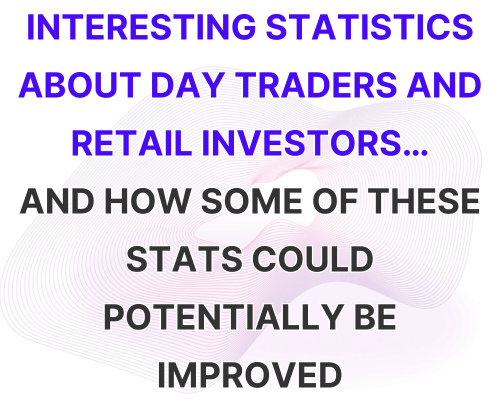

Day traders and retail investors are not very good at making money. They are, however, very good at losing it.
It’s a fact.
A simple Google search of “what percentage of traders lose money” reveals hundreds of results, 22 pages of them…
Citing stats showing a whopping 80-95% of day traders end up in the red.
And for retail “investors”, or DIY, self-directed investors – those who don’t actively trade in and out of short-term positions – outcomes are not much better.
You see, data from the Financial Times reveals that over 70% of DIY investors end up losing, even if they hold longer-term positions.
In just a moment, we’ll explain why even this group, the buy-and hold self-directed investor, often find themselves losing money too.
First…
The Capital Donors
Most day traders and self-directed investors are essentially fueling the profits of the small, yet effective minority.
One Google search result of “percentage of retail investors that lose money” says “75% of Retail Investors Are Essentially Capital Donors.”
Meaning the vast majority of DIY investors are on the wrong side of the market and are “donating” their money to a small percentage of winners.
As you can imagine, the small percentage of winners taking these “donations” include institutional and professional investors, as well as some well-prepared day traders and self-directed investors.
The question is why do these two groups, day traders and self-directed investors, have such a poor win rate? And is there a way that both groups could improve their dismal results?
Let’s start with the reasons most day traders and DIY investors lose money. And it’s rather simple… poor preparation, emotional trading, a lack of market understanding and no real strategy.
Essentially, most day traders are gamblers, while many DIY investors, even those that have a buy-and-hold strategy, don’t often utilize proper research and market data tools.
Buy and hold… buy and beware
MarketWatch says, “Going all the way back to 1926, it turns out that a stunning 59% — roughly three out of five — of all the stocks ever quoted on the U.S. stock market have made their investors poorer.
“Yes, the stock market overall has gone up phenomenally since then. But all of the gains have come from the other 40%, or two out of five. And even among those “winners” most of the gains have come from a very few.”
So, even a buy-and-hold strategy, one that lacks proper research and stock selection, often leads self-directed investors down a losing path, a historically losing path where 60% of all stocks have left them poorer…
While professionals have gotten richer.
Research, research and more research
What truly sets the winners apart from the losing majority of day traders and self-directed investors is research, and the proper application of actionable market data.
See, while professional and institutional investors may take days, weeks, and sometimes months or longer before making an investment in a single company (while utilizing tools like SentimenTrader for both long, medium and short term market analysis and actionable short-term trade data), day traders and DIY investors generally do not.
Instead, they get a tip, or see a trend and hop on in… hoping for the best.
But, as we’ve shown, hoping for the best is a losing strategy. One built on emotion rather than logic.
So, is it possible for day traders and self-directed investors, even buy-and-hold investors to better their chances at winning in the markets?
Well, we think so.
And again, it comes down to research, research and more research.
Or, more simply, they must employ the same strategies that the winners employ.
You see, while it is “popular” (and emotional) to villainize institutions and professional traders as sharks and scoundrels, perhaps DIY investors and traders should drop the emotions and do what the pros do…
Utilize actionable research and market data tools like SentimenTrader.
If you can’t beat them, join them.
